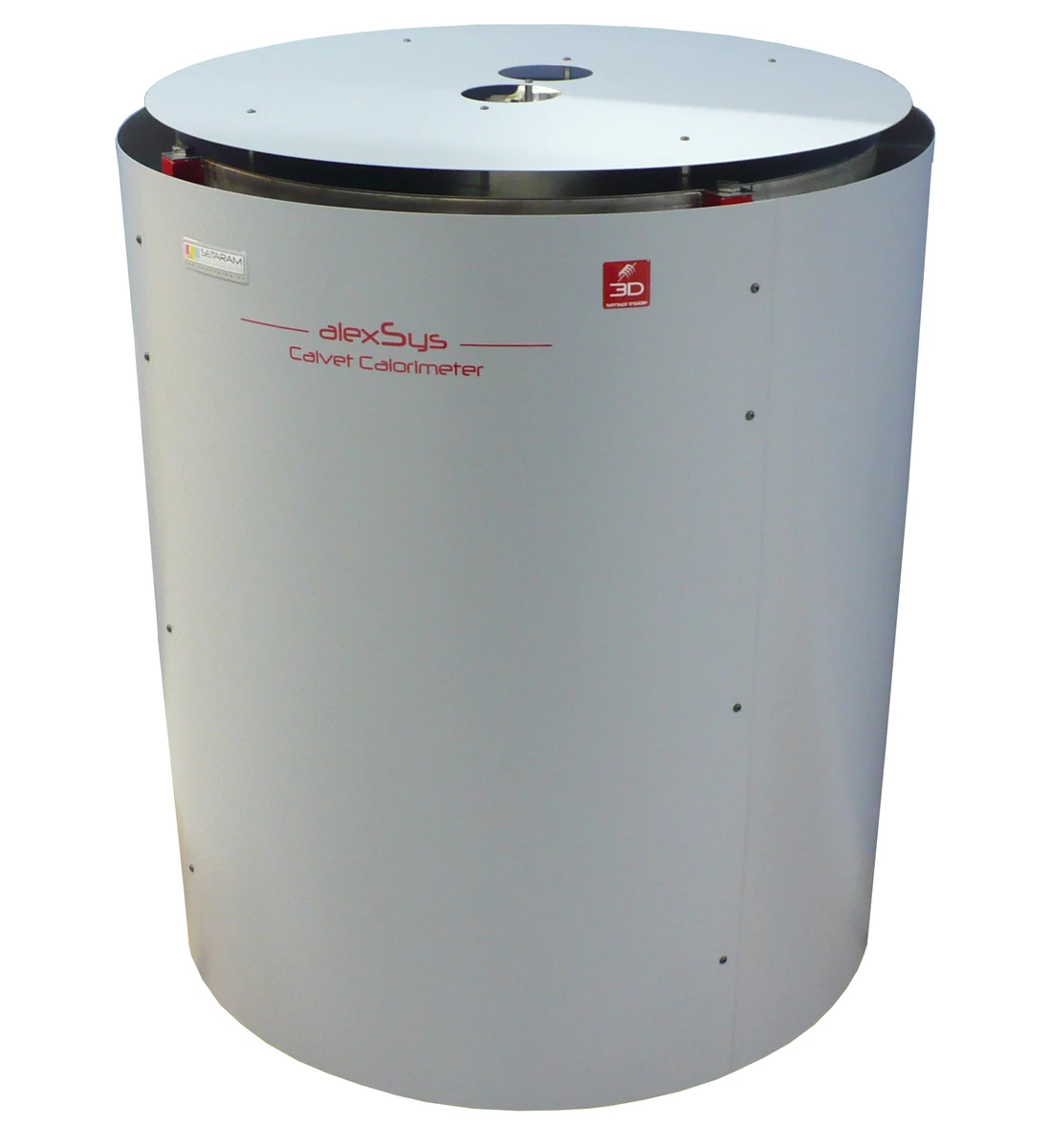Produit
Description
Sensitivity, stability, flexibility and precision: The AlexSys calorimeter features a 3D Calvet Sensor, providing high sensitivity and exceptional The calorimeter block and furnace design ensures a high signal-to-noise ratio,temperature and signal stability, and low detection limit permitting low energy and slow reactions to be. The sensitivity of the AlexSys does not change by more than 2% with
- weight, shape and nature (powder, pellet, fiber, liquid, etc.) of sample,
- contact between sample and crucible,
- crucible material,
- sweeping gas (inert or oxidizing) and its flow rate.
The sample chamber is big enough (working volume 20-30 cc depending on sample cells) to contain a variety of assemblies, to provide mixing and gas bubbling through the solvent, and to design experiments to simulate different thermochemical processes at high temperature.
Ease of operation: The leading CALISTO software provided with the calorimeter is intuitive and powerful, enabling any typical or special-design experiment and data analysis to be performed. The calorimeter operates isothermally, with temperature and sensitivity stable over many months.
Sample loading and handling is straightforward.
- weight, shape and nature (powder, pellet, fiber, liquid, etc.) of sample,
- contact between sample and crucible,
- crucible material,
- sweeping gas (inert or oxidizing) and its flow rate.
The sample chamber is big enough (working volume 20-30 cc depending on sample cells) to contain a variety of assemblies, to provide mixing and gas bubbling through the solvent, and to design experiments to simulate different thermochemical processes at high temperature.
Ease of operation: The leading CALISTO software provided with the calorimeter is intuitive and powerful, enabling any typical or special-design experiment and data analysis to be performed. The calorimeter operates isothermally, with temperature and sensitivity stable over many months.
Sample loading and handling is straightforward.
The AlexSys is based on a differential 3D Calvet Sensor made of an array of thermocouples (thermopile)which completely surrounds the measuring zone and is connected to a constant temperature block. This design captures over 90% of the heat flow in or out of the sample.
The system is twinned (two thermopiles per calorimeter)for additional signal stability and greater experimental throughput. The calorimeter is calibrated using a drop method in which a sapphire pellet (or other calibrant) is dropped into an assembly similar to that used for the experiment.Such calibration can be done periodically rather than after each experiment because the calibration factor is accurate and stable over time.
The system is twinned (two thermopiles per calorimeter)for additional signal stability and greater experimental throughput. The calorimeter is calibrated using a drop method in which a sapphire pellet (or other calibrant) is dropped into an assembly similar to that used for the experiment.Such calibration can be done periodically rather than after each experiment because the calibration factor is accurate and stable over time.
The unique feature of this calorimeter is a large sample chamber in which one can carry out chemical reactions at high temperature. Applications include drop solution calorimetry with gas flow above the sample and/or gas bubbling through the molten solvent, direct reaction calorimetry to form alloys and compounds, aluminothermic and other oxidation-reduction reactions, gas-solid, gas-liquid, and liquid-liquid reactions. More specifically, the instrument permits the measurement of the energetics of crystalline oxides, glasses, amorphous, and nanophase and porous materials, of hydrous phases and carbonates, of metals and alloys, of semiconductors, and of carbides, nitrides and oxynitrides. The thermochemical data obtained are essential to understanding materials compatibility and reactivity in both technological and geological application,and, more fundamentally, the energetics offer insight into chemical bonding, order-disorder reactions, and phase transitions. Relevant research disciplines and industries include:
• Ceramics
• Nuclear energy
• Semiconductors,superconductors
• Glass technology
• Metallurgical processes,high strength alloys
• CO2 sequestration
• Solar energy materials
• Thermoelectrics
• Ferroelectrics, piezoelectrics, multiferroics
• Catalysts
• Micro- and mesoporous materials, zeolites
• Nanomaterials
• Mineralogy, mineral physics, geochemistry, petrology, geophysics
• Ceramics
• Nuclear energy
• Semiconductors,superconductors
• Glass technology
• Metallurgical processes,high strength alloys
• CO2 sequestration
• Solar energy materials
• Thermoelectrics
• Ferroelectrics, piezoelectrics, multiferroics
• Catalysts
• Micro- and mesoporous materials, zeolites
• Nanomaterials
• Mineralogy, mineral physics, geochemistry, petrology, geophysics
Type de produit
Ce produit a été créé et référencé pour le bon fonctionnement de la plateforme
